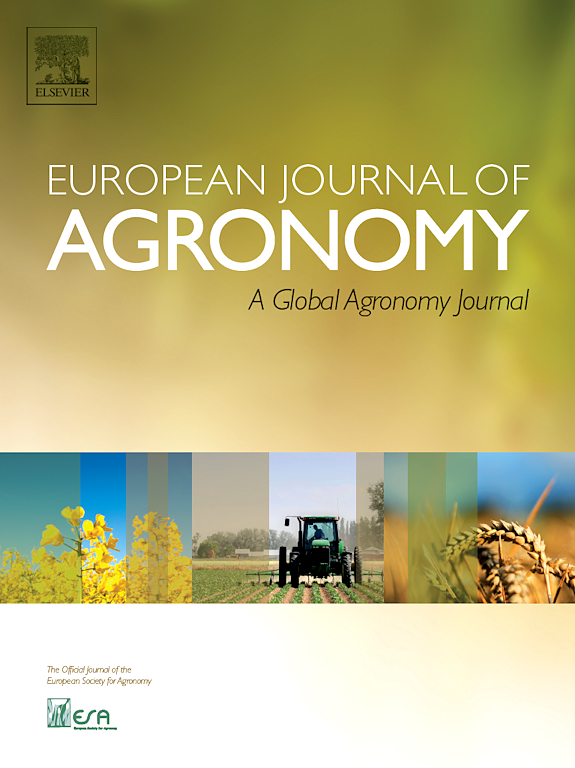Ver ítem
- xmlui.general.dspace_homeCentros Regionales y EEAsCentro Regional Mendoza - San JuanEEA La ConsultaArtículos científicosxmlui.ArtifactBrowser.ItemViewer.trail
- Inicio
- Centros Regionales y EEAs
- Centro Regional Mendoza - San Juan
- EEA La Consulta
- Artículos científicos
- Ver ítem
Use of olive pomace extract as a pollinator attractant to increase onion (Allium cepa L.) seed crop production
Resumen
Onion is an allogamous species with protandry, as anthers release pollen before the stigma is receptive. Thus, insect pollination is needed to produce seeds. When male sterile lines are used, an efficient pollinator is important to ensure pollen transfer to the stigma. Therefore, increasing seed yield depends on increasing bee activity. Seed yield is variable in hybrid lines and lower than open-pollinated varieties, with a decrease of up to 60%. Bee
[ver mas...]
Onion is an allogamous species with protandry, as anthers release pollen before the stigma is receptive. Thus, insect pollination is needed to produce seeds. When male sterile lines are used, an efficient pollinator is important to ensure pollen transfer to the stigma. Therefore, increasing seed yield depends on increasing bee activity. Seed yield is variable in hybrid lines and lower than open-pollinated varieties, with a decrease of up to 60%. Bee attractants sometimes are used to influence worker bees towards flowers for pollination. The objective of this work is to use a food industry waste, such as olive pomace, as bee attractant upon application of the water extract on onion umbels. The effectiveness of this by-product in enhancing pollination efficiency was evaluated and compared to untreated controls. Male-sterile lines, as well as a fertile line, were used in commercial fields and environmental variables were registered. Pollination effectiveness was measured by seed yield. Olive pomace water extracts (OPWE), rich in bioactive compounds, from local industries were evaluated. Some compounds present in the OPWE were analyzed, identified and quantified. The OPWEs were applied during flowering, at different times and correlated with seed yield and the frequency of bee visits. After 3 years of study, we can assert that the application of OPWE enhances honeybee pollination efficiency, and as consequence improves onion seed yield.
[Cerrar]

Autor
Monasterio, Romina Paula;
Caselles, Cristian;
Trentacoste, Eduardo Rafael;
Olmo-García, Lucía;
Carrasco-Pancorbo, Alegría;
Galmarini, Claudio Romulo;
Soto, Verónica;
Fuente
European Journal of Agronomy 149 : 126921. (September 2023)
Fecha
2023-09
Editorial
Elsevier
ISSN
1161-0301
1873-7331
1873-7331
Formato
pdf
Tipo de documento
artículo
Palabras Claves
Derechos de acceso
Restringido
 Excepto donde se diga explicitamente, este item se publica bajo la siguiente descripción: Creative Commons Attribution-NonCommercial-ShareAlike 2.5 Unported (CC BY-NC-SA 2.5)
Excepto donde se diga explicitamente, este item se publica bajo la siguiente descripción: Creative Commons Attribution-NonCommercial-ShareAlike 2.5 Unported (CC BY-NC-SA 2.5)


